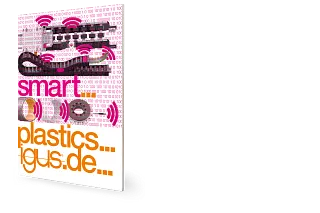Cambiar idioma :
Estación de lavado de trenes: mantenimiento predictivo
Tecnología de sensores inteligentes para la supervisión del estado y el mantenimiento predictivo del sistema de lavado de trenes
El lavadero de trenes de la Société Nationale des Chemins de Fer Luxembourgeois (CFL) limpia a diario trenes de cercanías y larga distancia en su nave de lavado de 200 metros de largo. Se utilizan varias cadenas portacables para garantizar que los carros de lavado circulen a ambos lados del tren, guiando con seguridad todas las mangueras y cables de energía, datos, aire comprimido, agua y productos de limpieza. Anteriormente, los costosos fallos de las cadenas eran cada vez más frecuentes. Por este motivo, las cadenas portacables se utilizan ahora junto con una tecnología de sensores inteligentes que supervisa el estado del sistema y planifica un mantenimiento predictivo.

Visión general de smart plastic
Nuestro nuevo folleto le muestra todo de un vistazo
Resumen del tema:
- Condition Monitoring (i.Sense)
- Productos de Condition Monitoring
- Ejemplos de aplicaciones de Condition Monitoring
- Mantenimiento predictivo (i.Cee)
- Ejemplos de aplicación del mantenimiento predictivo
- ¿Cómo fluyen los datos con el mantenimiento predictivo?
Consultas
Estaré encantado de responder a sus preguntas personalmente

Consultas y envíos
En persona:
De lunes a viernes de 8:00 a 18:00h
Online:
24h


